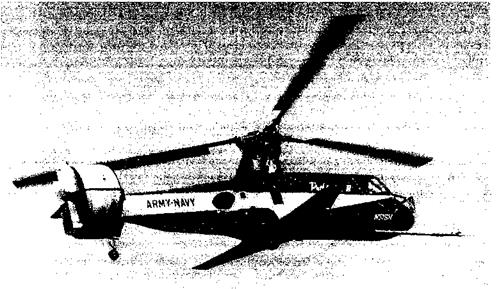High-Speed Rotorcraft
![]()
 |
VprtiPiil lift aircraft tbot іюа г»лтплппЛ|п У vlUvui mi uiiviuu uiui uov wui^vuiiulii
are referred to as high-speed rotorcraft. Not only are these aircraft capable of vertical takeoff and landing, but they can attain much higher speeds than conventional helicopters. They are, however, not necessarily more efficient (say, in terms of effective lift-to-drag ratio) nor are they as economic because they generally always have a higher empty weight fraction (i. e., lower payload), as well as higher capital and operating costs.
1.10.1 Compound Helicopters
A compound helicopter involves a lifting wing in addition to the main rotor (lift compounding) or the addition of a separate source of thrust for propulsion (thrust compounding) – see the review of Lynn & Drees (1967). The idea is to enhance the basic performance metrics of the helicopter, such as lift-to-drag ratio, propulsive efficiency, and maneuverability. The general benefit can be an expansion of the flight envelope compared to a conventional helicopter (see Fig. 6.38). While there are no compound helicopter designs in current production (although many prototype designs have been built), except for some of the Russian designs that may have an element of lift compounding, most helicopter manufacturers at one time or another have investigated auxiliary propulsion or lifting wings to off-load the rotor and expand the flight envelope. However, there are major drawbacks in this compound design in terms of increase in empty weight and loss of payload capability, download penalties in hover, reduced vertical rate of climb and higher operating costs.
One of the first experimental compound helicopter designs was the McDonnell XV-1. This was a pressure jet driven rotor, with a wing and a pusher propeller. After a vertical takeoff, the power was shifted from the tip jets to the propeller and the rotor continued to turn in autorotation. In 1954 the aircraft was flown at speeds approaching 175 kts (201 mph,
|
Figure 6.38 Representative speed-altitude flight envelopes of a conventional helicopter versus a compound design, a fixed-wing turboprop, and a tilt-rotor. |
324 km/h). The Sikorsky NH-3A was based on the S-61 and used a wing mounted with two turbo-jets for auxiliary propulsion. It achieved speeds of up to 230 kts (265 mph, 388 km/h) – see Fradenburgh & Chuga (1968). The Bell UH-1 compound also had a wing and two turbojets and reached a speed of 275 kts in level flight. The Fairey company built a number of tip-jet driven compound machines, with the last and largest being the Rotodyne (see
пяор. 71 S’i This Ч’З ООП Ih ( S 000 ]co яіггтяЛ was пола/ргргі hv two tnrhnnrnns whirb яісп
supplied compressed air for the tip jets. In 1959 the machine set a world speed record in its class of 167 kts (192 mph, 309 km/h). The Piasecki Pathfinder (Fig. 6.39) was a compound
|
Figure 6.39 The Piasecki Pathfinder was a successful compound helicopter concept from the 1960s but it remained in the experimental phase. |
that used a rotor off-loaded by a small, low-mounted fixed wing when the craft transitioned into forward flight. The ducted fan (“ring-tail”) at the tail, with vertical vanes in the duct, provided anti-torque and directional control. The 16H-1A Pathfinder II was a bigger and more powerful version, with a cabin large enough for eight seats. This machine reached level flight speeds of 195 kts (224 mph, 361 km/h). This US Navy and US Army evaluation program provided a wealth of valuable information on compound rotorcraft technology and operations, much of which was later used in the development of the Lockheed AH-56 Cheyenne (Fig. 1.39), which used a wing and a pusher propeller mounted to the tail. Today, the Piasecki Company continues to examine compound helicopter concepts. In the early 1970s, Boeing-Vertol flew the tandem Model 347 with relatively large wings, the technical motivation for which is discussed in detail by Stepniewski & Keys (1984).
The ideas of compounding have received renewed attention by some manufacturers, with some revived ideas being discussed by Humpherson (1998). Orchard & Newman (1999a, b; 2000) have considered some of the unique design issues associated with the optimization of a modern compound helicopter concept. It remains to be seen, however, if the compound helicopter design will reemerge as a viable rotating-wing design concept for the twenty-first century.












